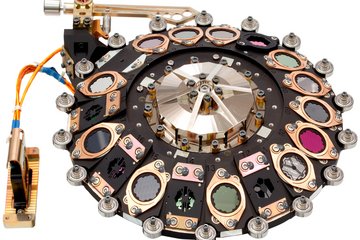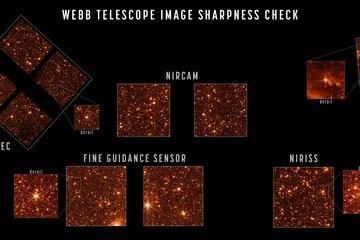The Universe in a new dimension
Astronomical objects appear in unprecedented detail in the first images from the James Webb Telescope
Six months after its launch, the James Webb Telescope has delivered its first images. They show fascinating glimpses of distant galaxies as well as turbulent scenarios of the birth and death of stars. In addition, the space observatory has captured the spectrum of an exoplanet. "It all looks fantastic and even exceeds our high expectations," says Oliver Krause from the Max Planck Institute for Astronomy in Heidelberg. There, his team had developed and built important components for the hardware over the past few years.
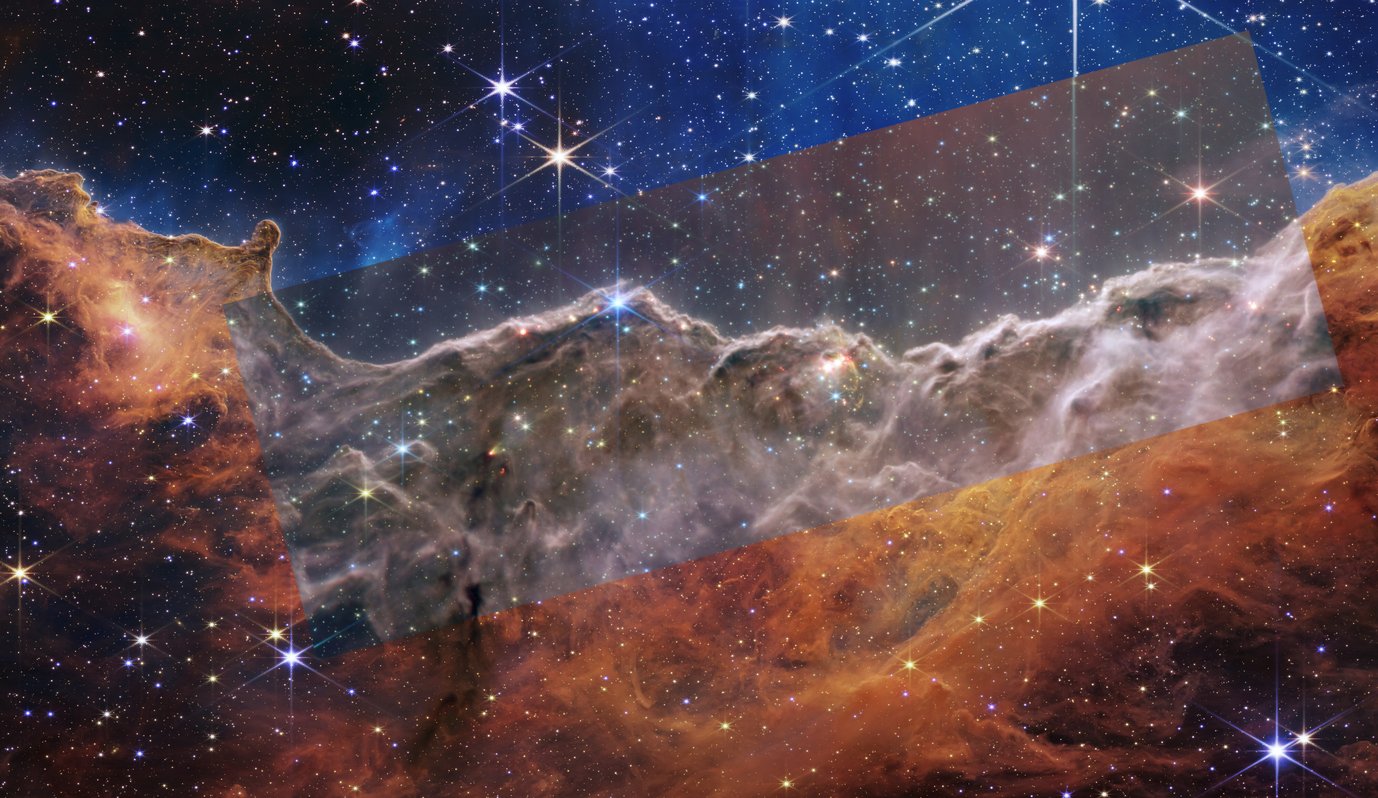
One of the images shows the spectrum of WASP-96b. This gas planet, 1150 light years away, is half the size of Jupiter and orbits its parent star once every three and a half days. "You can see how much better the telescope's measurement accuracy is when you compare it to its predecessors like Spitzer or Hubble," says Maria Steinrück. The scientist works on the atmospheres of exoplanets at the Max Planck Institute for Astronomy - a field of research that the space telescope is expected to give a whole new impetus. "In the future, the James Webb telescope will make it possible to determine the composition of the atmospheres of exoplanets that were previously too small or too cool."
As sharp and deep as never before
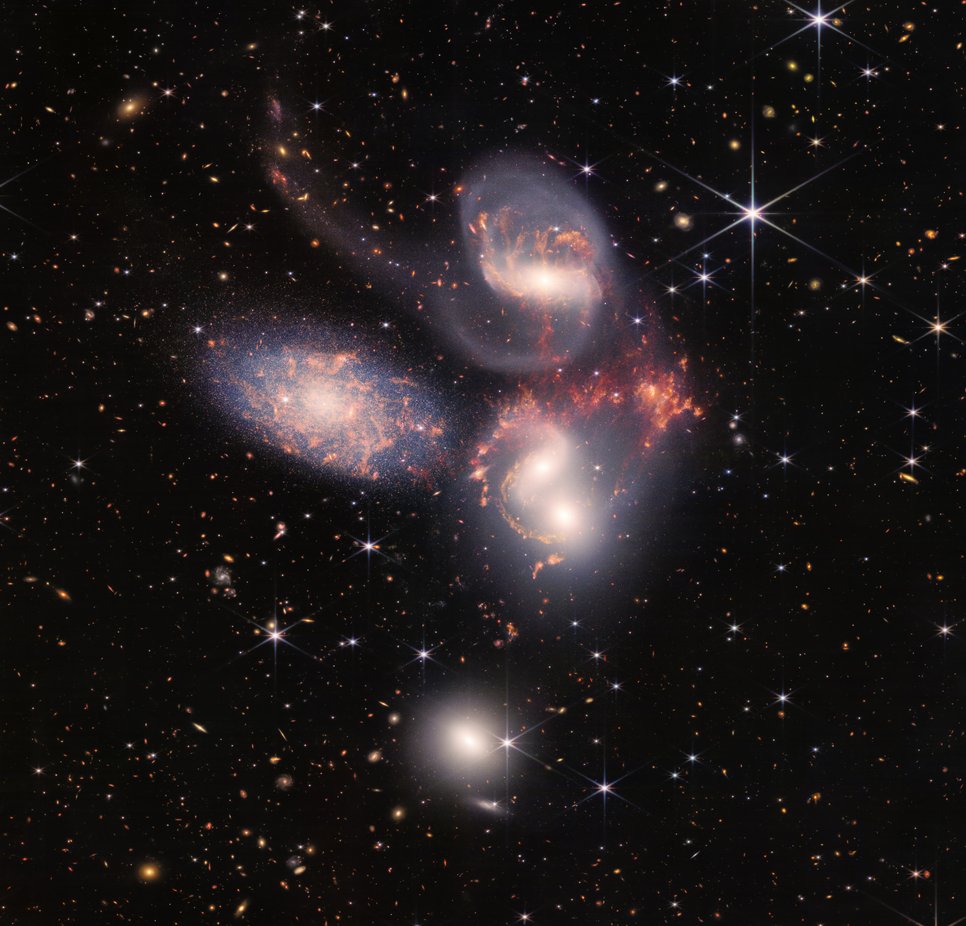
Galaxies are the main motif in the image of Stephan's Quintet, an ensemble of five Milky Way systems discovered by the French astronomer Edouard Stephan in 1877 in the constellation Pegasus. The group of five, at a distance of 290 million light-years, is quite close together, and the members influence each other due to their gravity. Gas swirls around and new stars are born all the time. "The special thing is not only the clarity and sharpness of the image," says Oliver Krause. In the photo, the surroundings of Stephan's quintet appear in a dramatic view. "Many astrophysical processes are reflected there, which can now be studied with unprecedented precision."
Previously unknown richness of detail and unique dynamics are also revealed in the images of the Southern Ring Nebula and the Carina Nebula. While the former announces the death of a star, the latter resembles a cosmic delivery room in which hundreds of suns give birth. Both celestial objects belong to our Milky Way.
Previously unknown richness of detail and unique dynamics are also revealed in the images of the Southern Ring Nebula and the Carina Nebula. While the former announces the death of a star, the latter resembles a cosmic delivery room in which hundreds of suns give birth. Both celestial objects belong to our Milky Way.
The strengths of the new ten-billion-dollar observatory also lie in the depths of space. For example, it has set its sights on the galaxy cluster SMACS 0723, which acts like a gravitational lens. The cluster of galaxies in the foreground focuses and distorts the light of the much more distant objects behind it. These appear as if through a magnifying glass. Because light takes time to travel through the cosmos, telescopes act like time machines: Observing celestial bodies at a great distance therefore always means looking into the past. In this way, "James Webb" illuminates the early days of the universe.
A telescope with a modular system
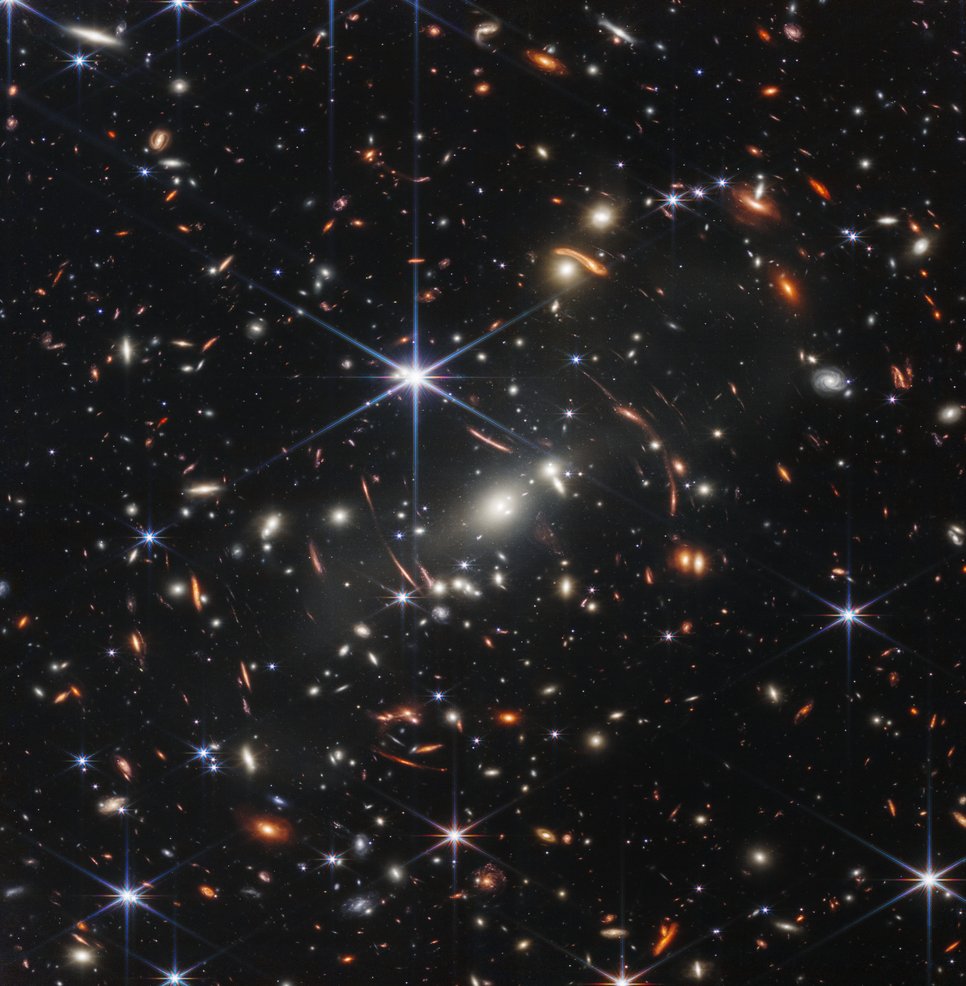
A lot could have gone wrong in the past six months: the experts had identified no fewer than 344 crucial sources of error before the launch on Christmas 2021. Oliver Krause calls them "single point failures". He and his group in Heidelberg not only supplied components for the space telescope, but also intensively followed and accompanied the preparatory work over the past six months.
For the path from launch to a ready-to-use telescope was extremely complex. The James Webb Space Telescope was practically sent into space as a construction kit. The two most important structures literally had to unfold first: the five-layer solar shield the size of a tennis court and the main mirror consisting of 18 honeycombs with a diameter of six and a half metres.
During unpacking, the engineers and technicians had to rely on all mechanical processes being precise and error-free. For example, 107 bolts and springs were used for the sunshield, and the hexagonal beryllium segments of the main mirror were pushed into the correct positions to the nearest millionth of a millimetre by a total of more than a hundred small motors. If one part had snagged, no one would have been able to intervene directly.
During this first phase, which lasted about three months, the 21-metre telescope cooled down to its operating temperature of minus 230 degrees Celsius. Its four scientific instruments are even colder, down to 267 degrees Celsius below zero. In addition, "James Webb" was gently manoeuvred to its observation post, Lagrange Point L2. "This location makes it possible to position the sun, the earth and the telescope as if strung on a string of pearls, thereby allowing the telescope to always look into space in the shadow of the protective shield," says Oliver Krause.
A precise choreography
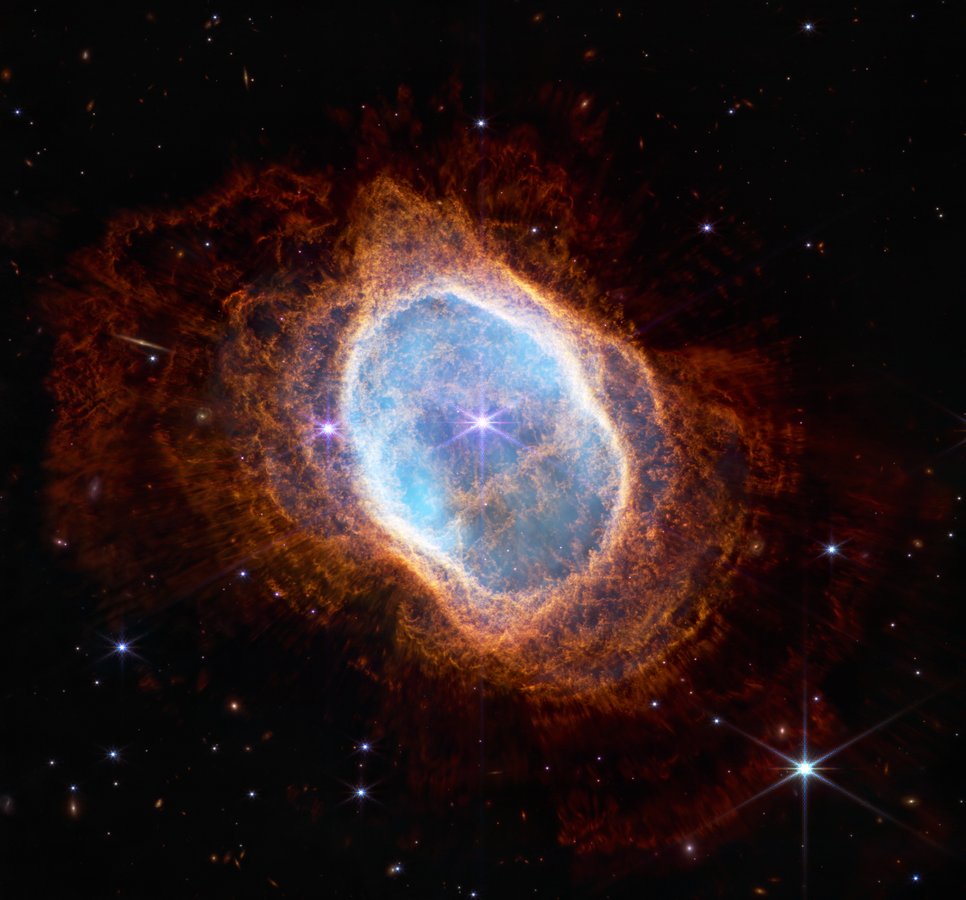
However, the space observatory is not stationary at the Lagrange point one and a half million kilometres from the Earth, but orbits it on a path whose diameter is larger than the distance between the Earth and the Moon. Such a journey takes half a year, and the telescope's control nozzles have to ensure a precise choreography.
Over the past three months, the four observation instruments have been put into operation and commands have been sent incessantly to the telescope from the control centre in Baltimore, USA.
The tests, data and first images of the past weeks already looked excellent. While the tension was rising in Oliver Krause and all his colleagues, the James Webb telescope finally sharpened its "eyes" and looked into the universe with full visual acuity.
Today, the first images of galaxies and cosmic nebulae, as well as the spectrum of an exoplanet, were released. "I can't believe this day is actually here! Even before I started my PhD in 2016, everyone was talking about how they couldn't wait to see the first data from James Webb," says Maria Steinrück. The American-European observatory in space is expected to work for up to twenty years - time enough for lots of surprising discoveries.
HOR




